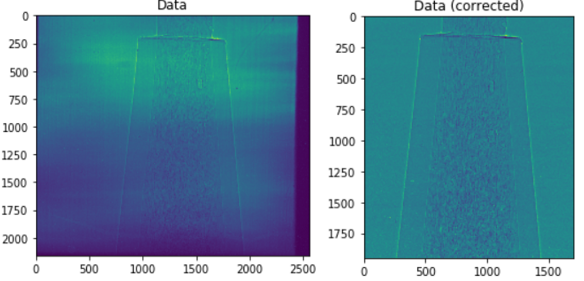You are here: CLASSE Wiki>CHESS/FMB Web>FullField (22 Feb 2022, LouisaSmieska)Edit Attach
Full-Field Imaging

What is Full-Field Imaging?
Full-Field Imaging is any imaging technique in which all pixels of the image are collected at the same time, in parallel. Full-field imaging is the most common image collection technique - when a picture is taken with a digital camera, it uses this method to capture the image. This is in contrast to the more detailed and time-consuming Scan-Probe imaging, where information from each position is collected sequentially and then compiled to produce a complete image (see the ScanProbe page for a more detailed explanation). At FMB, we use full-field imaging to produce images from the x-ray beamline.Example of Full-Field Imaging in Today's World
Full-Field Imaging is all around us today, from digital cameras to astrological telescopes. Full-field imaging is the most common way to capture an image, and has been around for decades. At FMB, we use full-field imaging to produce images like the one below, and then conduct an image processing technique called a flatfield correction to produce a clearer image. Our ImageProcessingTechniques page has information and a tutorial on how to conduct your own flatfield correction, and more.Image Processing Techniques
See our ImageProcessingTechniques page for information on how to do basic and advanced image processing for full-field images. -- JohnLee - 22 Jun 2020
Edit | Attach | Print version | History: r14 < r13 < r12 < r11 | Backlinks | View wiki text | Edit wiki text | More topic actions
Topic revision: r14 - 22 Feb 2022, LouisaSmieska
- Toolbox
-
 Create New Topic
Create New Topic
-
 Index
Index
-
 Search
Search
-
 Changes
Changes
-
 Notifications
Notifications
-
 RSS Feed
RSS Feed
-
 Statistics
Statistics
-
 Preferences
Preferences
- Webs
-
 ACC
ACC
-
 ACL
ACL
-
 Bunch
Bunch
-
 CBB
CBB
-
 NSF
NSF
-
 CBETA
CBETA
-
 CESR
CESR
-
 Private
Private
-
 CHESS
CHESS
-
 FMB
FMB
-
 Maia
Maia
-
 XIMG
XIMG
-
 XLEAP
XLEAP
-
 CHEXS
CHEXS
-
 CLASSE
CLASSE
-
 Inventory
Inventory
-
 CLEO
CLEO
-
 CMSPhase2MREFC
CMSPhase2MREFC
-
 Computing
Computing
-
 Blogs
Blogs
-
 Newsletter
Newsletter
-
 Cosmology
Cosmology
-
 DarkPhoton
DarkPhoton
-
 ERL
ERL
-
 EngineeringDesignDrafting
EngineeringDesignDrafting
-
 G2
G2
-
 HEP
HEP
-
 DBSWorkshop
DBSWorkshop
-
 SWIG
SWIG
-
 HLLHCCMSMREFC
HLLHCCMSMREFC
-
 HMF
HMF
-
 HumanResources
HumanResources
-
 Private
Private
-
 ILC
ILC
-
 Americas
Americas
-
 CesrTA
CesrTA
-
 Proposal
Proposal
-
 DampingRings
DampingRings
-
 AreaLeaders
AreaLeaders
-
 CTA09
CTA09
-
 ILCDR06
ILCDR06
-
 ILCDR07_KEK
ILCDR07_KEK
-
 ILCDR08
ILCDR08
-
 S3TaskForce
S3TaskForce
-
 WWS
WWS
-
 MacCHESS
MacCHESS
-
 Main
Main
-
 People
People
-
 PhotocathodeBrightBeams
PhotocathodeBrightBeams
-
 REU
REU
-
 SRF
SRF
-
 Safety
Safety
-
 Sandbox
Sandbox
-
 TestWeb
TestWeb
-
 System
System
-
 Theory
Theory
-
 Communications
Communications
-
 Documents
Documents
-
 Phase2MREFC
Phase2MREFC
-
 WebDev
WebDev
-
 XLEAP
XLEAP
 Copyright © by the contributing authors. All material on this collaboration platform is the property of the contributing authors.
Copyright © by the contributing authors. All material on this collaboration platform is the property of the contributing authors. Ideas, requests, problems regarding CLASSE Wiki? Send feedback
